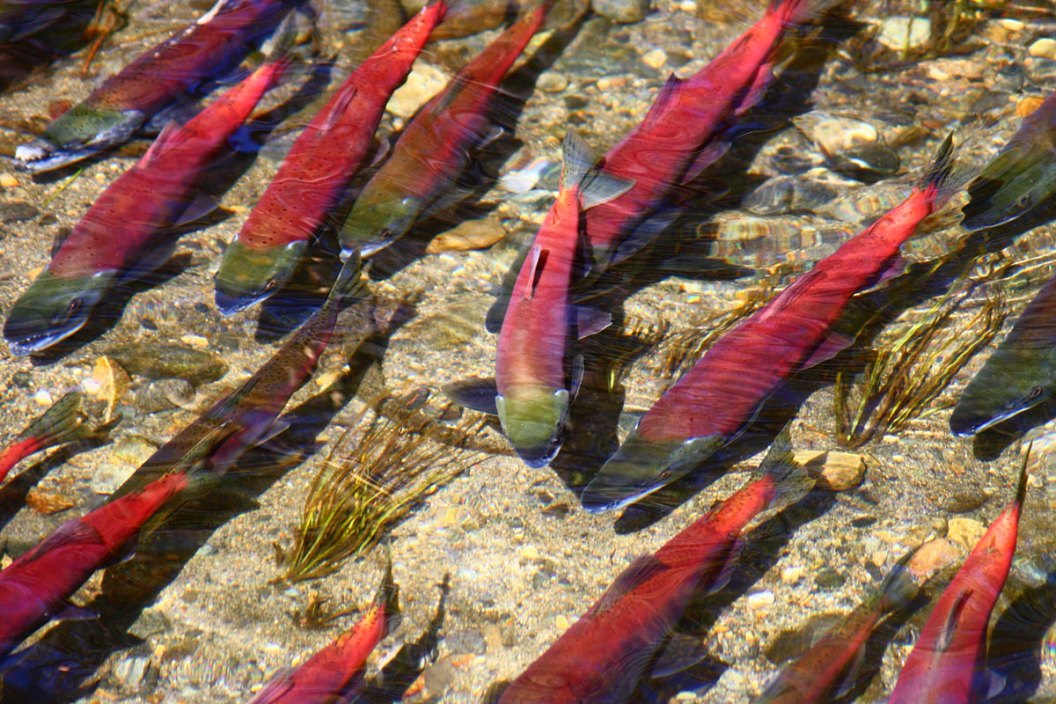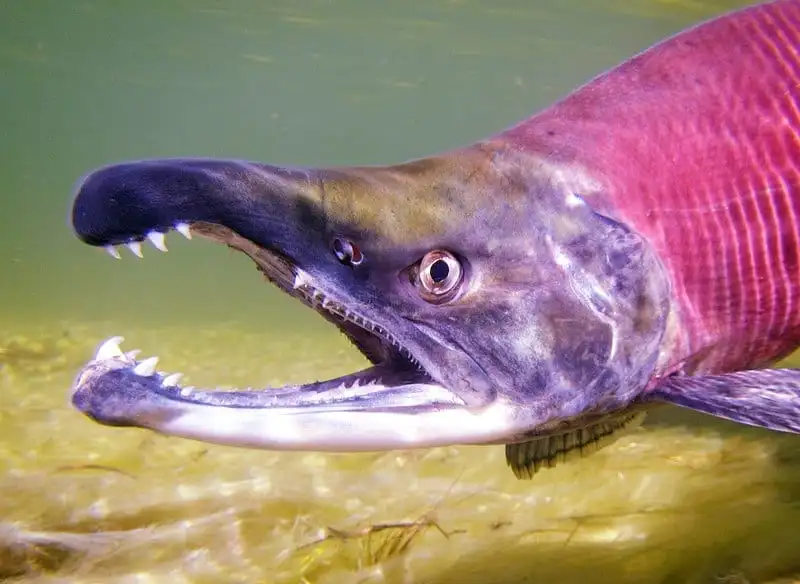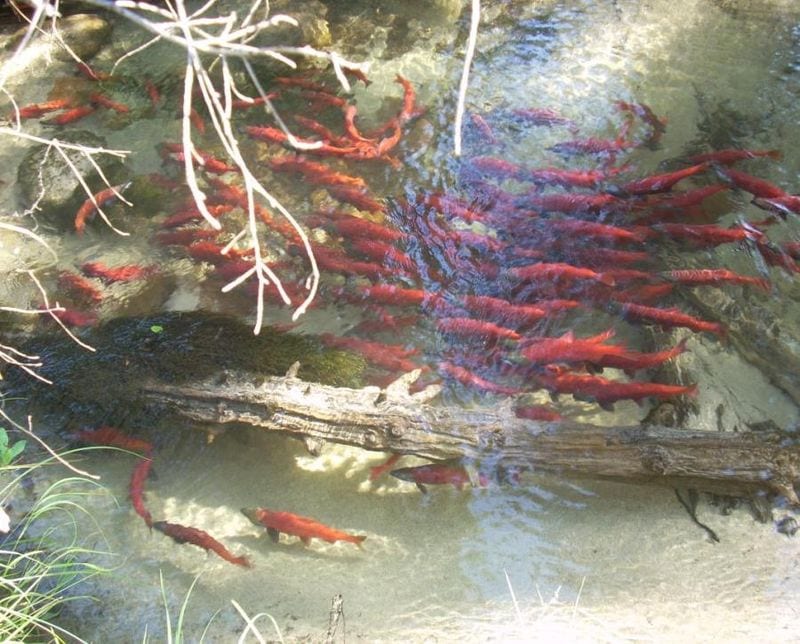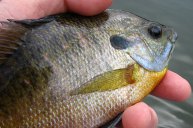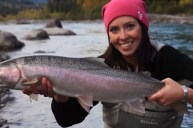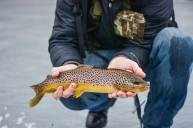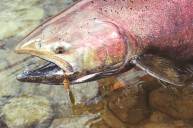Here's all you need to know about the fascinating Kokanee salmon.
When it comes to iconic freshwater game fish, few are as well-known as the kokanee salmon, also known by its scientific name of Oncorhynchus nerka.
This salmon is now legendary for its beautiful appearance and iconic hooked jaw.
They don't get quite as large as some of their other open water salmon relatives, but the fish is extremely popular with anglers as a fun-to-catch and even more fun-to-cook red fish.
We'll tell you all you need to know about this iconic fish and share some basic techniques on how to catch them.
What is a kokanee salmon?
You'll find there is debate with fisheries biologists and anglers about the kokanee salmon. This fish is basically the same as a sockeye salmon. The only difference is that kokanee salmon spend their entire lives land locked in large lakes and reservoirs.
The sockeye salmon of course, are famously born in freshwater but migrate to the saltwater of the Pacific Ocean and then back again to freshwater streams to spawn. Kokanee, meanwhile, spend their entire life cycle in freshwater lakes, streams, and reservoirs.
Their range is pretty limited. They are natively found in the United States in places like Alaska, Idaho, Washington, and Oregon. They are also abundantly found in British Columbia and the Yukon Territory.
Like many other species of game fish, they have also been introduced in places they aren't native. There are now kokanee populations in places like Wyoming, Utah, the Dakotas, New York, California, and Montana.
Biologists have found some genetic evidence the two species may be different species or sub species, but as of yet, they haven't been officially classified as such. Kokanee and sockeye salmon are silver for most of their lives. In some places they're actually referred to as silver trout or silver salmon. But once they're ready to spawn, adult kokanee undergo a radical change of color to a vibrant red body and black or green head. Males also develop a distinctive hump. Spawning kokanee utilize both streams and deep water for reproductive purposes.
In this vulnerable time, they sometimes fall victim to human poachers and large natural predators like bears and eagles because often kokanee spawn in very shallow water and the red color makes them very easy to spot.
Most large kokanee max out at about six pounds. The IGFA world record is a 9-pound, 10-ounce fish caught in Wallowa Lake, Oregon in 2010. This species doesn't grow much larger because once it spawns, it dies. Although interestingly enough, there have been cases of kokanees never reaching the "red fish" phase of their lives and growing larger.
For instance, in 2017 an angler caught a fish he thought was a huge rainbow trout in Lower Arrow Lake in British Columbia. But when he later went to cook it, he realized it might be a kokanee and sent the rest of the carcass to biologists.
They later confirmed the identity of the 12-pound fish. It would have blown the world record out of the water had the angler realized it and not eaten most of it.
Kokanee generally only live four to seven years and biologists confirmed this one was pushing it at seven years old, and had likely missed its chance at becoming a spawning fish.
Kokanee fishing
These fish have become extremely popular as sport fish because they are fun to catch and are great eating. However, there is a slight learning curve to catching them.
Kokanee feed mostly on plankton, so it would seem you shouldn't be able to catch them on standard lures at all. Most anglers seem to agree the idea is more to upset the fish and get it to strike out of anger, rather than trying for the standard predator/prey response of most game fish species.
This is probably why some of the more popular kokanee lures are often found in vibrant and outlandish colors not found in nature, like hot pink, orange, chartreuse, or a bright yellow. Popular lures include spoons, dodgers, and a variety of spinners. I've read about some anglers even having success trolling plain red hooks through schools of kokanee.
Most anglers like to use some sort of attractant scents with their lures and many swear by tipping their spinners or spoons with corn. Lure manufacturers have responded to this technique by offering a variety of attractant scents that can be applied to the corn. Keep in mind kokanee do have sharp teeth, so a leader is a necessity.
Another thing that has taken off is specialty corn dyes designed to add more scent and even more flash to the already overly vibrant kokanee lure arsenal. As for tackle, many rod and reel makers build equipment specifically built for trolling for this one species. Most rods seem to be light to medium in action.
The most popular technique for catching kokanee seems to be trolling. Use your electronics to locate the schools and then troll through them. Many anglers like to use down riggers to make their presentation even more precise.
Fly fishing
Another popular, but probably more challenging way to fish for kokanee is on a fly rod and reel. There are specialty trolling flies that are used to target the fish when they are still in lakes, but most fly fishing for kokanee is done while they are spawning in streams.
The obvious challenge is that kokanee do not feed during the spawn. So once again, you are simply trying to annoy the kokanee into striking. Because you're playing into their anger, you can use a wide variety of patterns and the crazy colors you might not utilize when targeting other species.
Most anglers agree that when targeting kokanee in streams, this is a good time to play into the fish's aggressive spawning behavior. Male kokanee see most anything red as a threat, and you'll find most fly anglers swear by using that color to provoke strikes, just like a matador tempting a bull.
Accessible to everyone
Salmon fishing on the ocean is quite popular, but isn't as accessible to everyone as targeting kokanee. If you're living in the eastern part of the country, a trip to Idaho, Montana, or Utah for kokanee is going to be much cheaper and more accessible than going after sockeyes in the Pacific.
For any anglers looking for fast action and a hard fighter that also makes a great shore lunch, it seems you just can't go wrong with giving kokanee salmon fishing a try!
NEXT: HOW TO GET STARTED IN FLY TYING, FOR THOSE WHO NEVER THOUGHT THEY WOULD
